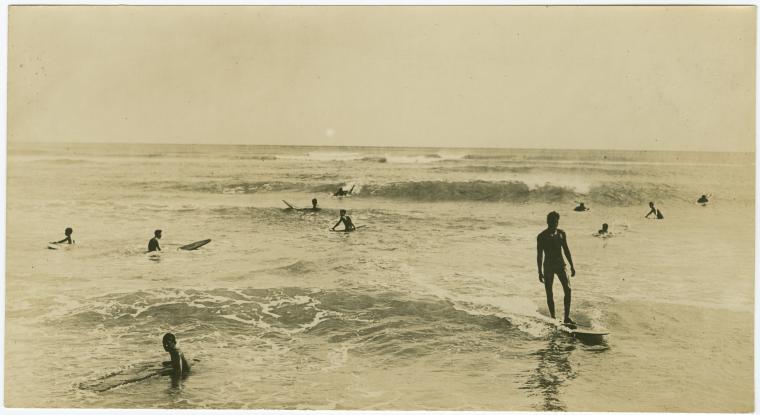History
The Dawn of Ancient Hawaiian Surfing – Heʻe Nalu and Hawaii’s Waves
When you think of surfing, you might picture California beaches or modern pros shredding monster waves. But the real story of ancient Hawaiian surfing begins thousands of miles across the Pacific, in the warm waters of Hawaii, where surfing—or heʻe nalu—was born. Long before it became a global sport, surfing was a cornerstone of Hawaiian life, a dance with the ocean that stretched back centuries. Let’s paddle into the origins of this incredible tradition.
The Roots of Ancient Hawaiian Surfing
Surfing’s roots trace to the Polynesians who settled Hawaii over a thousand years ago. These master navigators brought more than just canoes—they carried a deep connection to the sea. By around 400 AD, they were riding waves on wooden boards, a skill that evolved into heʻe nalu, meaning “wave sliding” in Hawaiian. It wasn’t just fun; it was a way to honor the ocean, a force they revered as both provider and teacher.
Early accounts, pieced together from oral histories and archaeological finds, suggest surfing started as a practical skill. Fishermen rode waves to shore after long days at sea, turning necessity into art. Over time, this grew into a cultural practice, with boards crafted from sacred trees like koa and wiliwili—light, buoyant woods that could handle Hawaii’s powerful swells. These weren’t the sleek fiberglass boards of today; some were massive, up to 16 feet long, and weighed over 100 pounds. Riding them took strength, balance, and an intimate knowledge of the tides.
A Royal Pastime
By the time Hawaiian society flourished, surfing had woven itself into the fabric of island life. It wasn’t just for commoners—chiefs and royalty, the aliʻi, embraced it too. For them, heʻe naluwas a display of prowess and prestige. The best waves, like those at Waikiki or Kahaluʻu, were often reserved for the olo boards—long, heavy planks symbolizing their status. Meanwhile, everyday Hawaiians surfed on shorter boards, proving the sport crossed all social lines.
Surfing’s Early Golden Age
By the 1700s, when Captain James Cook became the first European to document Hawaii in 1778, surfing was thriving. His crew marveled at Hawaiians “riding upon the surf,” standing upright on boards as they carved through waves with grace. Cook’s journals, along with later missionary records, paint a picture of a vibrant surf culture—men, women, and children all taking to the water, often betting on races or showing off tricks.But it wasn’t all play. Surfing had rules and rivalries. Chiefs might challenge each other to prove their skill, and competitions could settle disputes or win respect. The ocean was the arena, and the waves were the judge. This era, before Western influence dimmed its light, was surfing’s first golden age—a time when was purely Hawaiian, untouched by the world beyond the horizon.
Why It Matters Today
Fast forward to 2025, and surfing’s global footprint is massive—yet its heart still beats in Hawaii. At hawaii.surf, we’re launching on April 20 to celebrate these beginnings. The Polynesians who first rode those waves didn’t just invent a sport; they gifted us a legacy of courage, creativity, and connection to the sea. As we dig into this history, we’ll uncover more stories—from ancient boards to the legends who carried heʻe nalu forward. Stay tuned, and mahalo for joining us on this ride!

